Types of Microphones
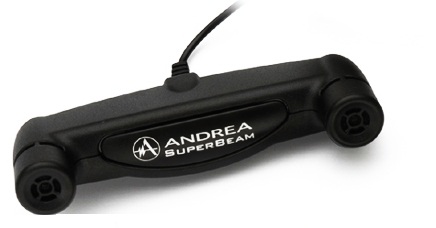
In this article, we will go over the main different types of microphones that exist.
Types of Microphone By Composition
There are three main types of microphones by composition.
Condenser Microphones
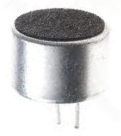
A Condenser microphone is a type of microphone that consists of a pair of charged plates that can be forced closer or further apart by variations in pressure. In effect, the plates act like a sound-sensitive capacitor.
One plate is made of a flexible metal or metal-coiled plastic that is positively charged by means of an external voltage source. The other plate is made of a rigid metal and serves as the ground of the microphone; it is fixed in place and grounded.
The condenser microphone is built with an amplifier attached to it. The amplifier is required to operate this type of microphone. A
very low-noise, high-impedance amplifier is used and it provides a low output impedance. Without the amplifier, the microphone's output signal would be so low,
it wouldn't be useful. The amplifier amplifies the microphone's recorded signal to a decent gain output signal.
Electret Microphones

An Electret microphone is a type of condenser microphone that comes with a permanent charge built into it. All microphones need a pair of charged plates (positive and negative plates) in order to function and record sound. General condenser microphones do not come precharged but need an external voltage to charge the microphone's diaphragm for the microphone to operate. Electret microphones, however, come with a permanent built-in charge.
An electret microphone is a variation of the condenser microphone. Instead of requiring an external voltage source to charge the diaphragm,
an electret microphone uses a permanently charged plastic element (electret) placed in parallel with a conductive metal backplate.
Dynamic Microphones

A dynamic microphone is a microphone which consists of a plastic diaphragm, voice coil, and a permanent magnet.
The diaphragm is connected to one end of the voice coil, while the other end of the coil is
loosely supported around (or within) the magnet. When an alternating pressure is applied to the diaphragm, the voice
coil alternates in response. Since the voice coil is accelerating through the magnet's magnetic field, an induced voltage
is set up across the leads of the voice coil. You can use this voltage to power a very small load, or you can use an
amplifier to increase the strength of the signal so as to drive a larger load.
Types of Microphones By Directional Characteristics
Now we will discuss microphones based on their directional characteristics. This is the direction from which
microphones pick up sound. For example, some microphones only pick up sound well when talking directly in front. Others
can pick up sound well from all angles. These are all discussed and shown below.
Unidirectional Microphones
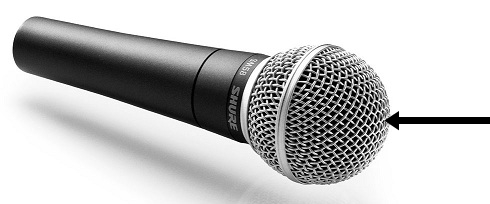
Unidirectional Microphones are microphones that only pick up sound with high gain from a specific side or direction of the microphone. Thus, if a user is speaking into a unidirectional microphone, he must speak into correct side, normally called the voice side, of the microphone in order to get good gain on the recording. This is in contrast to omnidirectional microphones, which pick up sound equally from all directions of the microphone.
Unidirectional microphones are used in applications where the target sound source to be
recorded is directly in front of the microphone, and all other sounds in the room that may be on the
sides and rear do not want to be recorded. An example of this is recording a professor's lecture in a
classroom. In a scenario where only the lecture of the professor needs to be recorded without any noise
that may be coming from the students behind, a unidirectional microphone has perfect application. Since
unidirectional microphones pick up sound well from the front while attenuating all noises in the sides and
rear, the high concentration of recording only from the professor talking allows more a cleaner recording
than if omnidirectional microphones were used, which would pick up much greater noise, since it records
from all sides of the microphone. Thus, unidirectional microphones have great application when a sound
source can stay stationary in front of the microphone to record only that sound source and no other.
Omnidirectional Microphones
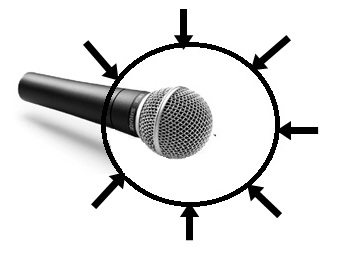
Omnidirectional microphones are microphones that pick up sound with equal gain from all sides or directions of the microphone. This means that whether a user speaks into the microphone from the front, back, left or right side, the microphone will record the signals all with equal gain. This is in contrast to unidirectional microphones, which pick up sound with high sensitivity only from a specific side.
Omnidirectional microphones are advantageous over undirectional microphones in that they allow
greater flexibility in the directionality of sound pick-up. Stated again, a user can speak into
any side of the microphone and it will still pick up good gain from all sides. This can be very
useful in applications where sound needs to be recorded from multiple directions. An example of this
may be a musical performance where there is a band of musical instruments in front and a choir singing
behind. A undirectional microphone would only be able to pick up one of the two with good gain while recording
the other very lowly, if at all. The disadvantage of omnidirectional microphones is that since they pick up
sound from all directions, they will also pick up more unwanted noise from the surrounding environment.
Bidirectional Microphones
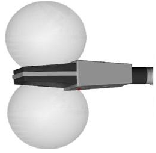
Bidirectional microphones (also called figure-of-eight microphones) are microphones that pick up sound well, or with high sensitivity, from the front and back but poorly, or with low sensitivity, from the sides.
The illustration to the right shows a bidirectonal microphone sound pick-up pattern. This pattern shows that a bidirectional microphone picks up lobes of sound of equal sensitivity on opposite sides of the diaphragm (front and back) and steep nulls at right-angles to the diaphragm (the sides).
Bidirectional microphones are used in applications where sound is recorded from the front of the micrphone and back of the microphone, but not the sides. An example of this is a Q&A lecture or presentation, where a professor gives a lecture to an audience and accepts questions from them. A microphone needs to pick up the speech of professor from the front and the questions asked from the back in the audience. This is a practical example of where bidirectional microphones are needed.
Cardioid Microphones
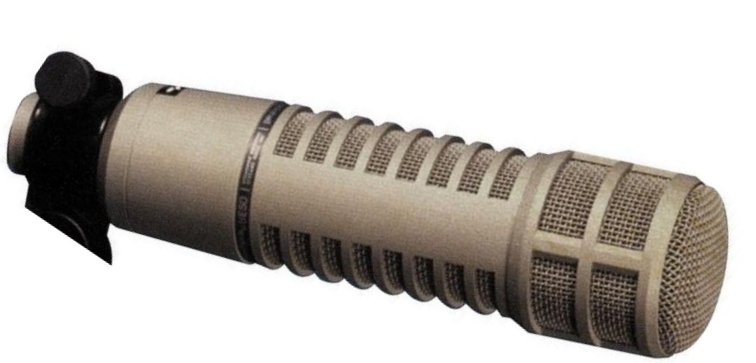
Cardioid Microphones are microphones that pick up sounds with high gain from the front and sides but poorly from the rear. Cardioid microphones are named for the fact that their directional sound pick-up is roughly heart-shaped in nature.
Cardioid microphones are used in applications where sound needs to be picked up from the front
and sides but not the rear. An example of this may be musical performance where a singer may be singing in
the front, a band playing instruments on the sides, with an audience of viewers in the back. In a scenario,
it may be desired only to record the music, the singer in front and band on the sides, but not the audience
in the rear. For this type of scenario, cardioid microphones have great use and applicaton.
Types of Microphone Products
Shotgun Microphones
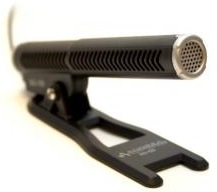
A shotgun microphone is a highly directional microphone that must be pointed directly at its target sound source for proper recording. Shotgun microphones use unidirectional microphones to achieve this high beam of concentration on the sound source to record the sound. Being that they use unidirectional microphones, they pick up sound well when the sound source is directly in front of them but begin to pick up the sound worse (much lower) when the sound source is moved to the sides and rear. A shotgun gets its name from the fact that the body of the microphone is shaped like the barrel of a shotgun, and just like a shotgun, the microphone must be aimed or pointed directly at its target source in order to effectively to pick it up.
The advantage of shotgun microphones (over other microphones) is they focus directly
on the sound source in front
and pick up the sound with high gain, while recording any other noises present in the environment very
low, if at all, that may be to the sides or rear. This is advantageous because it can pick up the sound
only that the user desires, directly in front, while disregarding any other unwanted sounds that may be
present in the environment. Therefore, shotgun microphones are highly used in applications where only the
sound directly in front of the microphone is to be recorded so that all other noises will be reduced and the
sound source is in a fixed position, directly in front of the shotgun microphone, and doesn't move much.
Microphone Arrays

A Microphone Array (or array microphone) is a microphone device that functions just like a regular microphone, but instead of having only one microphone to record sound input, it has multiple microphones (2 or more) to record sound.
The microphones in the array device work together to record sound simultaneously.
Microphone arrays can be designed to have as many microphones in them as needed or wanted to record
sound output. A common microphone array, however, is a 2-microphone array device, with one microphone
placed on the left side of the device and and the other placed on the right side. With one microphone
on each side, sounds can be recorded from both the the left and right side of the room, making for a
dynamic stereo recording which mimics surround sound. When played back on a stereo headset, the separate
left and right channel recording are distinctly different and noticeably heard.
Related Resources
What is Microphone Sensitivity?
What is a Directional Microphone?
What is Microphone Frequency Response?
Comment